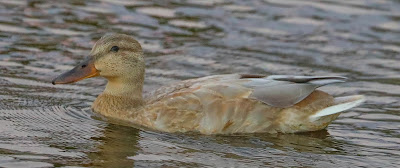I've seen Bonaparte's gulls on three occasions and all three were at Salton Sea State Park on the northeast side of the Salton Sea. I saw them Monday, January 16, and they were continuously landing in the harbor, then rising up in swirling flight like a tornado of birds. It was quite extraordinary. It was a little windy and I wondered if that might have been the cause? Apparently not. Bear River Blogger has a post on birds using thermals. He notes that many birds, gulls included, use them go gain altitude with less effort, but these gulls were going up and down, up and down, without any apparent need to go anywhere.
It is one of the smallest gulls. The adult has gray upperparts and white underparts, its wingtips are black above and pale below. In breeding plumage it has a black hood and orange/red legs and feet. It has a black bill, which is short and thin. In non-breeding plumage, it has a black spot behind the eye and its legs and feet are more pink. First winter birds have a black bar across the wings. Juveniles are a patchwork of brown and gray, but still have the black spot behind the eye.
They breed from southern Alaska to as far east as Quebec and south to within 200 miles of the U.S./Canada border. It winters along the coasts of North America and in the Great Lakes.
 |
| Orange is breeding, blue is wintering, yellow is migration. From Wikipedia. |

























































